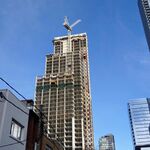My accesibility argument is silly? Really? I am in the majority, actually.
http://www.insidetoronto.com/news-story/71229-colle-pushes-for-lrt-station-at-oakwood/
Josh Colle pushes for a Oakwood stop after petition from local resident demand a stop.
http://www.thestar.com/news/gta/201...fight_to_put_leslie_stop_back_on_the_map.html
Resident fight to put Ferrand stop back.
My accessibility argument is quite valid, it's your argument that 500m isn't far that is silly. Like it or, not 500m is a pretty fair distance for many riders. It's why you hear stories of resident petitioning to put stops back in, and planners saying we should be building transit for livable communities, and not primarily for the quickest vehicle speed. You guys always ignore the total travel time from door to door, and just shrug it off by saying "x-distance isn't far, people are just lazy". when someone brings it up. Like it not or, it far by many people, and to focus solely on terminal to terminal riders is just wrong.
You need a good compromise between accessibility, and speed. Transit should be fast, but not at the expense of accesibilty, so the spacing for each corridor may be different. It's crazy to say we should make the station on every single transit route 1km apart, and that's it. I'm not a planner, but even I know that's just lazy planning.
I forgot to mention, the TC lines are going to have less stops than the current bus routes, which is a speed improvement in itself.





